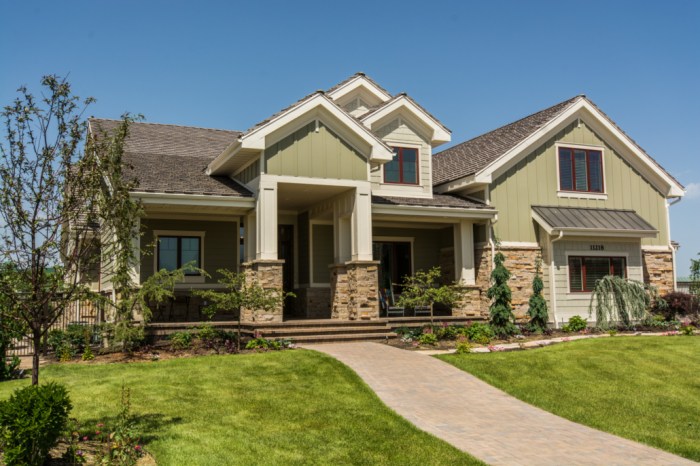The Top Fiber Cement Siding Contractors: Your Ultimate Guide

Delve into the world of fiber cement siding contractors and discover the key aspects that make them essential in construction projects. From their expertise to the benefits they bring, get ready for an insightful journey into the realm of fiber cement siding installation.
Overview of Fiber Cement Siding Contractors
Fiber cement siding contractors play a crucial role in construction projects by specializing in the installation, repair, and maintenance of fiber cement siding. These professionals are highly skilled and experienced in working with fiber cement materials, ensuring the proper installation and longevity of the siding.
Benefits of Hiring Professional Contractors
- Expertise: Fiber cement siding contractors have the necessary expertise to handle the installation process efficiently and effectively.
- Quality Workmanship: Professional contractors can deliver high-quality workmanship, ensuring a durable and aesthetically pleasing finish.
- Time and Cost Efficiency: Hiring contractors can save time and money in the long run, as they can complete the project in a timely manner and prevent costly mistakes.
- Warranty: Many professional contractors offer warranties on their work, providing peace of mind for homeowners.
Services Offered by Fiber Cement Siding Contractors
- Installation: Contractors specialize in the proper installation of fiber cement siding, ensuring a seamless and secure fit.
- Repair: In case of damage or wear, contractors can provide repair services to restore the integrity of the siding.
- Maintenance: Regular maintenance is essential for the longevity of fiber cement siding, and contractors can offer maintenance services to keep the siding in top condition.
- Consultation: Contractors can provide expert advice and guidance on choosing the right type of fiber cement siding for a specific project.
Qualifications and Skills
To become a successful fiber cement siding contractor, individuals need to meet certain qualifications and possess specific skills. Here is a breakdown of the key requirements for this role:
Necessary Qualifications and Certifications
- A valid contractor's license in the state where they operate is essential to legally work on projects.
- Completion of specialized training programs or certifications related to fiber cement siding installation is highly recommended.
- Insurance coverage, such as general liability and worker's compensation, to protect both the contractor and clients during the project.
Key Skills
- Proficiency in reading and interpreting blueprints and technical drawings to ensure accurate installation.
- Strong knowledge of safety protocols and building codes to maintain a secure work environment.
- Excellent communication skills to liaise effectively with clients, suppliers, and other professionals involved in the project.
- Attention to detail and precision to deliver high-quality workmanship and meet client expectations.
Importance of Experience
Having experience in handling fiber cement siding projects is crucial for contractors to demonstrate their expertise and reliability. Experienced contractors are better equipped to handle challenges that may arise during installation, have a better understanding of best practices, and can provide valuable insights to clients based on past projects.
Clients often value contractors with a proven track record of successful projects, making experience a key factor in establishing credibility and trust in the industry.
Installation Process
Fiber cement siding contractors follow a detailed step-by-step process to ensure a seamless and durable installation. This process involves the use of specialized tools and equipment to achieve high-quality results.
Tools and Equipment
- Power saws: Used for cutting the fiber cement siding to the required dimensions.
- Nail guns: To securely fasten the siding to the exterior of the building.
- Tape measure: Essential for accurate measurements to ensure a precise fit.
- Caulking gun: To apply sealant and ensure water resistance.
- Ladders: For reaching higher areas during installation.
Installation Process
- Preparation: Contractors start by preparing the surface, ensuring it is clean, dry, and free of any debris.
- Measuring and cutting: The siding is measured and cut to fit the dimensions of the building, taking into account windows, doors, and other openings.
- Attachment: The siding is then attached to the exterior using nail guns, ensuring it is securely fastened.
- Sealing: Contractors apply sealant around the edges and joints to prevent water infiltration and ensure durability.
- Finishing touches: Any remaining trim or accessories are added to complete the installation and enhance the aesthetic appeal.
Material Selection and Recommendations
When it comes to fiber cement siding materials, there are various options available in the market. It is essential to choose the right type of material based on the specific requirements of the project to ensure durability and aesthetics.
Types of Fiber Cement Siding Materials
- Fiber Cement Lap Siding: This type of siding mimics the look of traditional wood siding and is available in various textures and colors.
- Fiber Cement Shingles: Shingles offer a unique, textured appearance and are a great choice for adding character to a building.
- Fiber Cement Panels: Panels provide a modern and sleek look, ideal for contemporary architecture.
Factors to Consider for Material Selection
- Climate: Consider the climate of the area to choose a material that can withstand extreme weather conditions.
- Style and Design: Select a material that complements the architectural style of the building.
- Maintenance: Evaluate the maintenance requirements of different materials to choose one that fits your maintenance preferences.
Recommendations for Fiber Cement Siding Materials
- For a classic look, Fiber Cement Lap Siding is a popular choice that offers versatility and durability.
- If you prefer a more unique and textured appearance, consider opting for Fiber Cement Shingles to add visual interest to your project.
- For a modern and sleek aesthetic, Fiber Cement Panels are a great option that provides a clean finish to the building.
Cost Estimation and Budgeting
When it comes to fiber cement siding projects, understanding the cost estimation and budgeting process is crucial to ensure a successful and financially sound installation. Fiber cement siding contractors typically estimate project costs based on several factors that can influence the overall budget.
Let's delve into the details of how these costs are determined and offer tips on effective budgeting for your fiber cement siding project with the help of contractors.
Factors Influencing Project Costs
- Size of the Project: The square footage of your home or building will significantly impact the overall cost of the project. Larger properties will require more materials and labor, leading to higher expenses.
- Complexity of the Installation: The design and layout of your property, as well as any intricate architectural details, can affect the complexity of the installation process. More complex projects may require additional time and resources, increasing the cost.
- Material Costs: The type and quality of fiber cement siding chosen for your project will play a significant role in determining the overall cost. Higher-end materials will come at a premium price compared to standard options.
- Labor Costs: The labor required for the installation, including the number of workers needed and their experience level, will impact the total cost of the project. Skilled labor may come at a higher price but can ensure a quality installation.
- Additional Services: Any additional services required, such as removal of old siding, preparation of the surface, or custom finishes, will add to the overall project costs.
Tips for Effective Budgeting
- Get Multiple Quotes: Obtain quotes from different fiber cement siding contractors to compare pricing and services offered. This can help you choose the most cost-effective option for your project.
- Plan for Contingencies: Always set aside a contingency fund for unexpected expenses or changes in the project scope. It's essential to be prepared for any unforeseen costs that may arise during the installation process.
- Communicate Clearly: Clearly communicate your budget constraints and expectations with your contractor from the beginning. This can help avoid any misunderstandings and ensure that the project stays within your financial limits.
- Consider Long-Term Value: While upfront costs are essential, consider the long-term value of investing in high-quality fiber cement siding. Quality materials and professional installation can increase the durability and value of your property in the long run.
Maintenance and Repairs
Proper maintenance and timely repairs are essential to ensure the longevity and durability of fiber cement siding. Contractors play a crucial role in guiding homeowners on the necessary upkeep tasks and addressing any issues that may arise.
Maintenance Requirements
- Regularly inspect the siding for any signs of damage, such as cracks, chips, or moisture infiltration.
- Clean the siding at least once a year to remove dirt, dust, and debris that can accumulate and cause discoloration.
- Trim any vegetation near the siding to prevent moisture retention and potential damage.
- Apply a fresh coat of paint or sealant as needed to protect the siding from weather elements.
Common Repairs and Solutions
- Cracks and chips: Contractors will fill in the cracks and chips with a specialized patching compound to prevent further damage.
- Moisture damage: Contractors will identify the source of moisture infiltration and repair or replace the affected siding to prevent mold and rot.
- Color fading: Contractors can recommend repainting or staining the siding to refresh its appearance and protect it from UV rays.
Prolonging Lifespan
- Perform regular inspections and maintenance tasks to catch any issues early on.
- Address repairs promptly to prevent minor problems from escalating into major damage.
- Follow the manufacturer's guidelines for care and maintenance to ensure the siding's warranty remains valid.
Summary
In conclusion, fiber cement siding contractors play a crucial role in ensuring the success and durability of your siding projects. With their skills and experience, they guarantee a seamless installation process and long-lasting results. Trust the experts for your next fiber cement siding endeavor.
FAQ Guide
What qualifications do fiber cement siding contractors need?
Fiber cement siding contractors typically need certifications in construction and relevant training in siding installation.
How do contractors estimate project costs for fiber cement siding installation?
Contractors assess factors like material costs, labor, and project scope to provide accurate cost estimates.
What tools are commonly used by fiber cement siding contractors?
Contractors use tools such as nail guns, circular saws, and caulking guns for efficient siding installation.
What are the key maintenance requirements for fiber cement siding?
Maintenance involves regular cleaning, inspections for damage, and prompt repairs when needed to prolong the siding's lifespan.
How can homeowners choose the right fiber cement siding for their project?
Homeowners should consider factors like durability, aesthetics, and climate suitability when selecting fiber cement siding materials.

